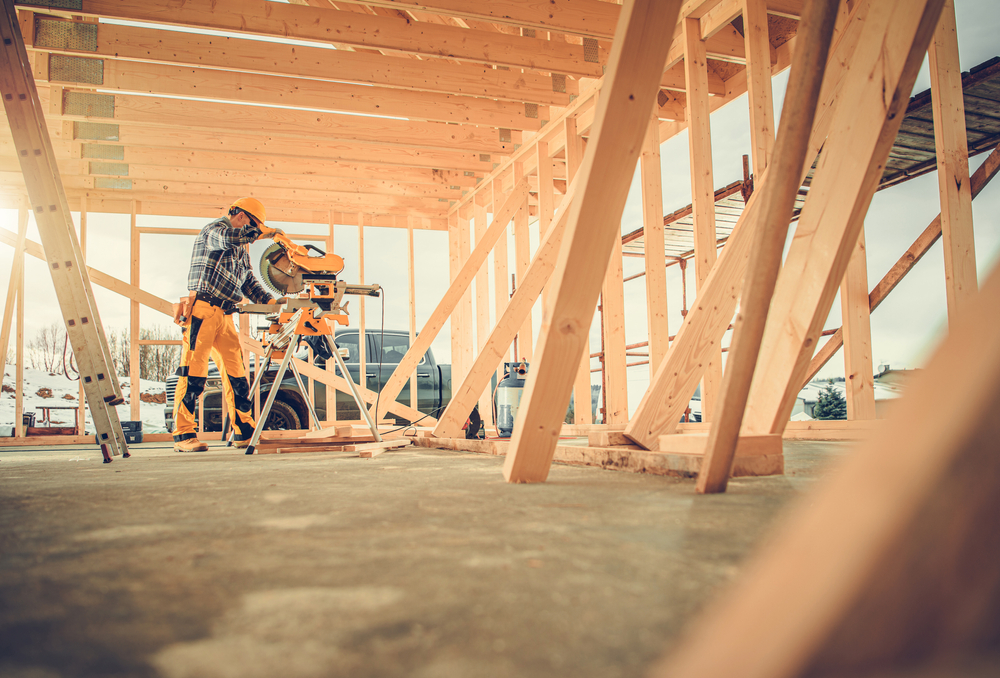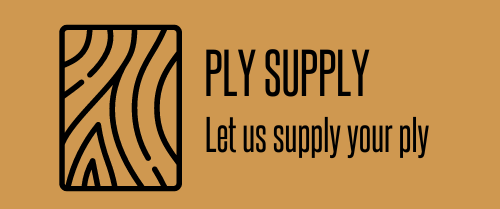Decoding Timber Grades | An Ultimate Guide by Ply Supply

Timber is the basic building material used in construction, especially in your home’s flooring, fencing, and decking.
But did you know that its quality and performance can vary widely based on its grade? Timber grades determine how well the wood resists stress, hazards, and environmental conditions.
That’s why it’s important to understand different timber grades before you start constructing your timber frame house.
So, Ply Supply is here with an ultimate guide to timber grades.
In this blog post, we’ll explore everything about timber grading from Australian Standards – AS 2796; including structural ratings, hazard levels, durability classes, and more. This will help you understand how to pick the best structural timber for your needs.
Let’s decode timber grades and set you up for success in your upcoming timber project.
A Guide to Timber Grading | What Does It Mean?
When it’s time to choosing timber for your home, the grade matters just as much as the species. But what exactly does timber grading mean?
What are timber grades?
“Timber grades classify wood based on its quality, appearance, strength, and intended use. These grades help buyers identify the right timber for construction, furniture, or decorative projects.”
Before moving towards different grades, let’s explore the key factors that influence timber strength.
5 Factors That Affect Timber Strength & Quality
Timber’s structural properties, strength, and durability are influenced by several factors:
1. Species
The type of wood determines its natural strength and durability. Hardwoods like Spotted Gum and Ironbark are stronger and more durable compared to softwoods like Pine.
2. Defects
Natural imperfections like knots, splits, cracks, and borer holes weaken timber and reduce its strength grade. The fewer defects a piece of timber has, the stronger and more reliable it is.
3. Moisture Content
The moisture level in timber largely impacts its strength.
- Unseasoned Timber: Also known as green timber, it contains high moisture levels and is weaker and more flexible.
- Seasoned Timber: Kiln-dried or naturally dried timber is much stronger and less prone to warping or bending.
4. Grain Orientation
The alignment of the wood fibers impacts its load-bearing capacity. Straight-grained timber is generally stronger than timber with irregular or cross-grain patterns.
5. Treatment
Treated timber resists decay, termites, and environmental damage which enhances its durability and performance in specific conditions.
Now, let’s move towards the different timber grades. Whether you need timber for framing house, furniture, or home’s flooring, it’s, basically, classified into the following grades:
- Structural Grades (Stress Grades / Strength Ratings)
- Treated Timber Grades (Hazard Levels)
- Durability Grades (Timber Durability Classes)
- Appearance Grades (Timber Aesthetic Grading)
Learn more about: Benefits of Timber Framing in Home Construction
Types of Timber Grades | Key Ratings to Consider
From hardwood to softwood, timber isn’t just graded on appearance or structure. It’s also rated on its ability to withstand environmental factors and loads. Below are some key grades and ratings of timber to consider:
Structural Grades / Stress Grades
These grades are basically strength ratings that indicate how well your timber will perform under stress. These ratings ensure that the timber can support heavy loads. This makes it perfect for building frames or timber frame houses. For the highest level of protection and durability, we recommend selecting timber with higher ratings to ensure long-lasting security.
Keep in mind that stress grades are specifically for structural timber and different grades are suited for different uses.
F Rating
The ‘F’ grades or ratings assess the strength of both hardwood and softwood flooring. It starts from F1 (the lowest) and goes up to F40. A higher number means stronger timber, capable of withstanding greater force.
For example:
- Timber-rated F14 can withstand a force of 14 MPa (Megapascals) without bending too much.
- Moreover, unseasoned hardwood timber usually has a default rating of F14 or F17.
- While kiln-dried hardwoods are mostly rated between F22 and F27 due to their improved strength and stability.
- Pine, being a softer wood, is usually weaker, with F-ratings around F5 to F8.
- Some hardwood species, such as Ironbark or Spotted Gum, can achieve ratings as high as F34 when kiln-dried and free of defects.
For decking and supports like joists and beams, it’s best to use hardwood timber rated F14 or higher. These grades ensure durability and safety in load-bearing applications.
MGP Rating
Many plantation species of structural pine are graded using a machine that applies a specific force to each board and measures how much it bends.
The less the timber bends under pressure, the stronger it is. This grading is represented by an MGP (Machine Graded Pine) rating, which can range from MGP10 to MGP15. They are mechanically tested for uniform strength.
Treated Timber Grades / Hazard Levels
The hazard level ratings show how well the timber can resist threats like termites, fungi, and rot. If you’re building in an area prone to pests, it’s important to select timber with a high hazard rating. These ratings range from H6, the highest level of protection, to H1, the lowest.
For instance, Ply Supply’s PlyLVL products are treated with H2S Glueline which gives them excellent resistance to termites. Let’s go through the resistance levels of timber given below:
| Hazard Level | Ideal for | Protection Against | Suitable Conditions |
| H6 | Marine environments | Marine wood borers, decay | Submerged in salt water |
| H5 | Full contact with ground and freshwater | Borers, termites, insects, extreme decay | Critical use, areas with heavy leaching and wetting |
| H4 | Outdoor applications | Borers, termites, severe decay | In-ground areas with heavy leaching and wetting |
| H3 | Outdoor use | Borers, termites, decay | Above-ground areas with moderate leaching and wetting |
| H2 | Indoor settings | Borers, termites | Above-ground areas protected from leaching and wetting |
| H1 | Indoor applications | Borers | Well-ventilated above-ground areas |
For superior protection, explore our H2S-treated PlyLVLs now.
Learn more about: How Do You Check for Signs of Termites in House Timbers?
Timber Durability Classes
Durability is an important factor, especially for outdoor projects.
Timber is rated based on the natural ability of timber to resist rot, decay, and insect attacks. Knowing how resistant a type of timber is will help you pick the right wood for your project, particularly if it will be exposed to the elements.
Let’s have a look at different classes of timber in terms of durability.
| Class | Description | Protects Indoor Areas for | Protects Outdoor Above Ground Areas for | Protects In-Ground Areas for |
| Class 1 | Very durable Long-lasting | 50+ years | 50+ years | 25 years |
| Class 2 | Durable Long-lasting | 50+ years | 30 years | 15-25 years |
| Class 3 | Moderate durability | 50 years | 15 years | 8-15 years |
| Class 4 | Low durability | 50 years | 5-8 years | Less than 5 years |
Timber Aesthetic Grades
The best structural timber is graded not only for strength but also for appearance This ensures it meets the demands of tough construction projects.
Timber aesthetic grades focus on the appearance of the wood, making them essential for projects where looks matter. These grades help you determine whether the timber’s look fits your project. They consider aspects like colour variation and natural features, such as gum veins and knots. However, it’s important to note that aesthetic grades do not assess the timber’s strength or durability.
Different Timber Appearance Grades
1. Select Grade
Select grade timber offers a clean and uniform look with very minimal defects, few knots or other features. The grain is straight which provides a consistent, clean and polished appearance.
2. Standard Grade
Standard grade timber presents a more varied look than select grade. You’ll notice a moderate number of natural features, including knots, burls, and gum veins. This allows for some natural imperfections and enhance the timber’s uniqueness.
3. Natural / Feature Grade
Feature grade timber shows the most natural characteristics, giving it a rustic charm. You can expect to see prominent features such as gum veins, surface checking, and traces of insect activity. They make it a great choice for a more organic aesthetic. Suitable for projects where appearance isn’t a priority.
Do you need high-quality and durable timber for your next building project?
Contact Ply Supply | Get Durable & Termite-Treated Timber Today
As trusted structural timber suppliers, we provide termite-resistant PlyLVL and high-quality plywood for a wide range of construction projects. Our products are designed to meet Australia’s strict standards for durability.
All of our PlyLVL products are treated to provide superior timber’s resistance to pests and moisture. We make sure they perform excellently in Australia’s harsh conditions.
